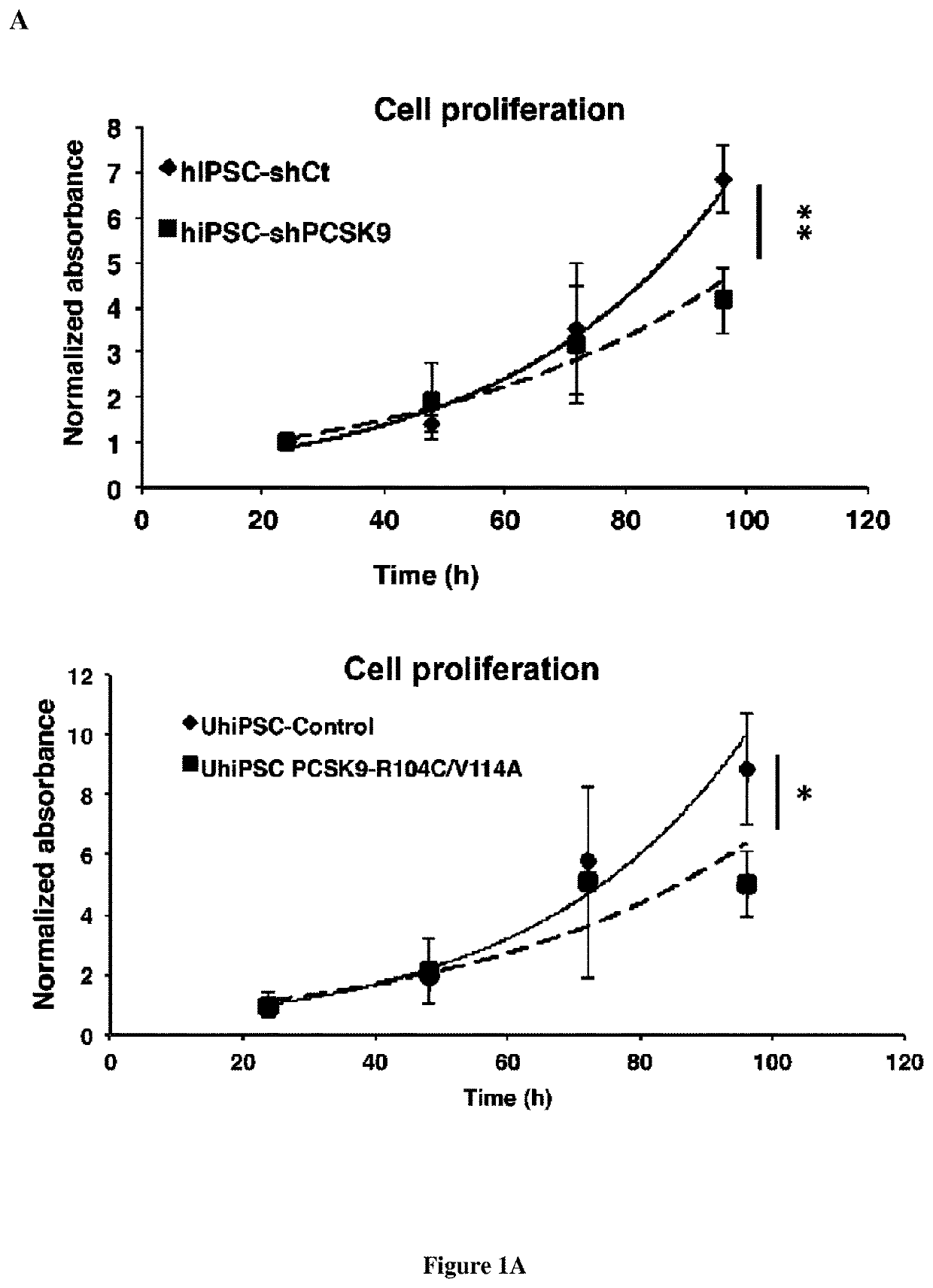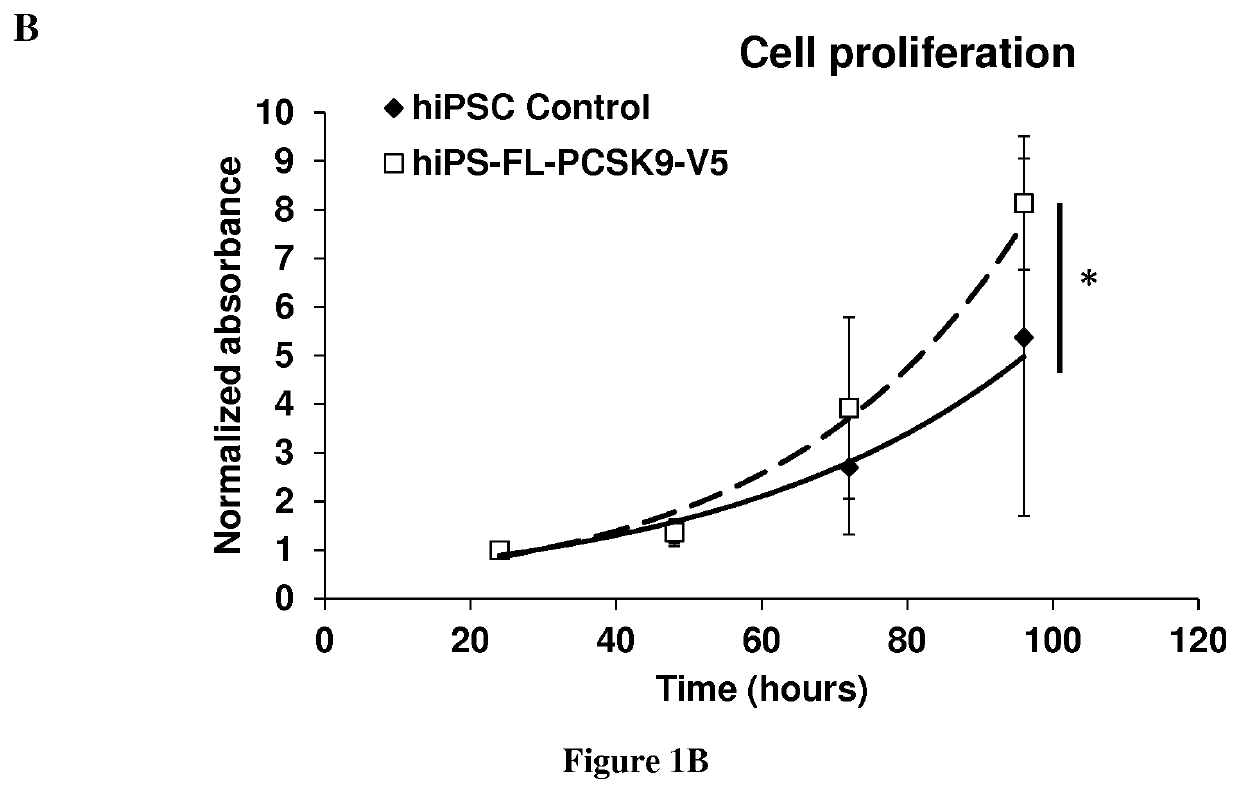Methods and pharmaceutical compositions for modulating stem cells proliferation or differentiation
a technology of stem cells and compositions, applied in the field of stem cells, can solve the problems of different known or unknown pathway disruptions, shortening the gap in our insights on pcsk9 complexity, and limited cancer treatmen
- Summary
- Abstract
- Description
- Claims
- Application Information
AI Technical Summary
Benefits of technology
Problems solved by technology
Method used
Image
Examples
example
[0071]Material & Methods
[0072]1. Cell Culture
[0073]The human induced pluripotent stem cells (hiPSC) were reprogrammed from patient-derived urine cells and characterized as previously described (Si-Tayeb et al. 2016). hiPSC were cultured on mouse embryonic fibroblasts (MEFs) in hiPSC medium composed of DMEMF12 (Life Technologies) supplemented with 20% Knockout Serum Replacer (Life Technologies), 0.5% L-Glutamine (Life Technologies) with 0.14% β-mercaptoethanol (Sigma), 1% NEAA and 5 ng / ml fibroblast growth factor 2 (FGF2, Miltenyi) in hypoxia (4% O2, 5% CO2) and manually passed once a week. For feeder free culture conditions, hiPSC colonies were manually picked from MEFs and plated onto plates coated with Matrigel (Corning; 0.05 mg / ml) in StemMACS iPS-Brew medium (Miltenyi). Passages were performed using the Gentle Cell Dissociation Buffer (Stem Cell Technologies).
[0074]HepG2 cells and CACO2 cells were culture in DMEM supllumented with non essential amino acids, glutamate and 10% FCS...
PUM
 Login to View More
Login to View More Abstract
Description
Claims
Application Information
 Login to View More
Login to View More - R&D
- Intellectual Property
- Life Sciences
- Materials
- Tech Scout
- Unparalleled Data Quality
- Higher Quality Content
- 60% Fewer Hallucinations
Browse by: Latest US Patents, China's latest patents, Technical Efficacy Thesaurus, Application Domain, Technology Topic, Popular Technical Reports.
© 2025 PatSnap. All rights reserved.Legal|Privacy policy|Modern Slavery Act Transparency Statement|Sitemap|About US| Contact US: help@patsnap.com



